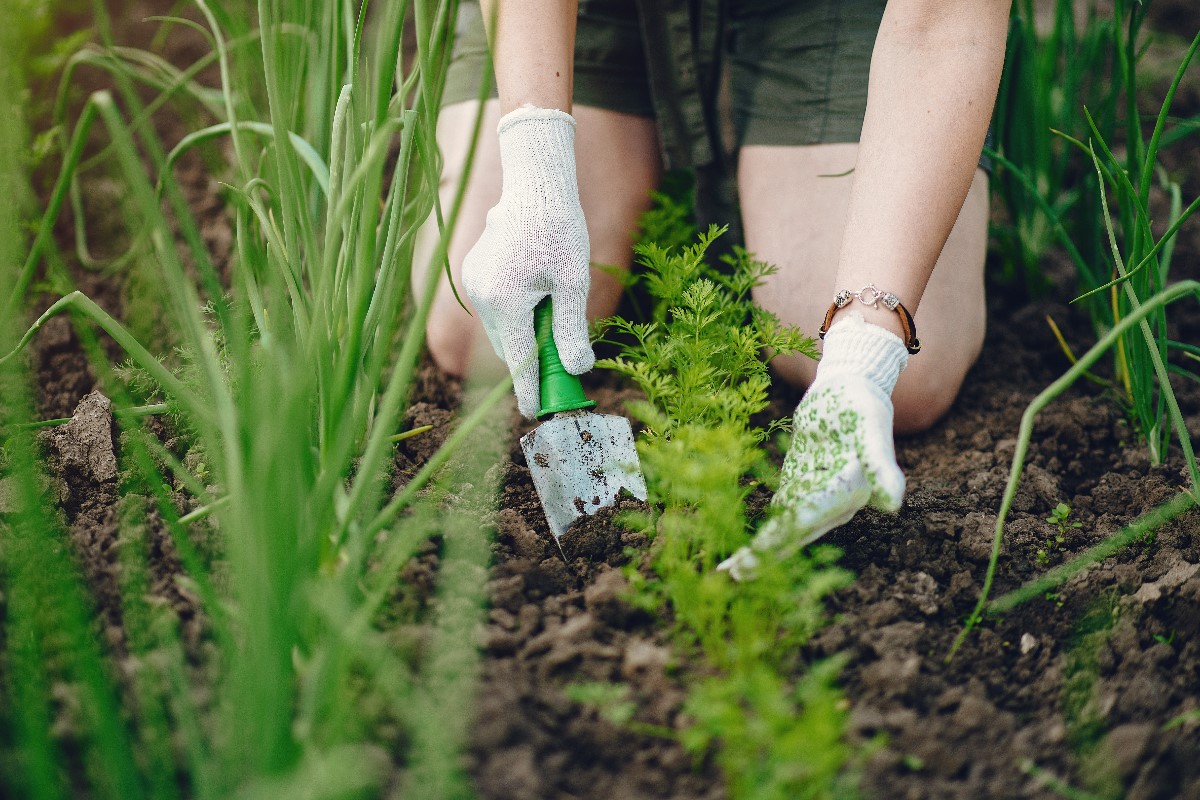
Vegetables from your own garden are healthy and taste great, plus growing them can bring a lot of fun and satisfaction. Learn how to start a vegetable garden step by step!
Vegetables should be a basic component of everyone’s diet. And although those available on store shelves are within our reach almost all year round, nothing can replace seasonal, self-grown carrots or potatoes. Growing a small vegetable garden is not complicated, and can bring much satisfaction. Besides, it is a very economical and ecological solution. What do I need to do to start a vegetable garden? How to start?
If you don’t have any experience in growing vegetables, set aside a small area for it at the very beginning. This will make it easier for you to ensure that all your plants will produce a good harvest. This could be, for example, 50 m2 – the most important thing is that the space gets plenty of sunlight and is away from trees and shrubs with overgrown roots. It is a good idea to start a vegetable garden close to the house. This will allow free access to a water outlet (sometimes plants even need to be watered daily).
Before you plant or sow vegetables, first prepare the soil properly. How to do it? First of all you need to loosen the soil with a hoe or a spade (pay special attention to this step if the soil is compacted and heavy). Next you need to fertilize the soil – peat or compost will be helpful here. Finally, level the ground and plan the beds. There are a few things to consider when doing this last step. First of all, the beds should be placed about 2 metres apart. Also don’t forget a path about 0.5 metres wide. All of these measures to prepare the soil for growing are best done in autumn, although you can also start in spring.
There are two ways to propagate vegetables. You can do it generatively or vegetatively. The former way is done by sowing into the ground or from seedlings. Generatively propagated vegetables include cucumbers, radishes, lettuce, beets, and beans. Before sowing the seeds into the ground, they are treated with a fungicide or insecticide, treated with a coating, and soaked to help them germinate faster
You can scatter seeds freely over an area, sow in rows, or sow a few seeds at a time. Vegetatively propagated vegetables include, for example, garlic (propagated from cloves), horseradish (propagated by root cuttings), and onions (propagated from spring onions)
After planting and sowing vegetables, do not forget to carry out regular maintenance, such as weeding. This treatment requires a lot of work, but it is very necessary. It consists of manually or mechanically removing weeds from the beds and from between them. The second important treatment is soil loosening, which should be done gently and quite often. If you are growing tomatoes or peppers, use a treatment called backing. These vegetables have limp stems, so it is necessary to use poles or stakes. Other treatments include frost protection, seedling abortion, and staking. Of course, you cannot forget about regular watering!
Growing vegetables in your own home garden is not difficult, but you need to remember about the so-called rotation, that is, not to plant in the same place the next year vegetables that have similar requirements and susceptibility to disease. It is a very good idea to have a good variety of vegetables in your garden.
Źródło zdjęcia: Designed by Freepik